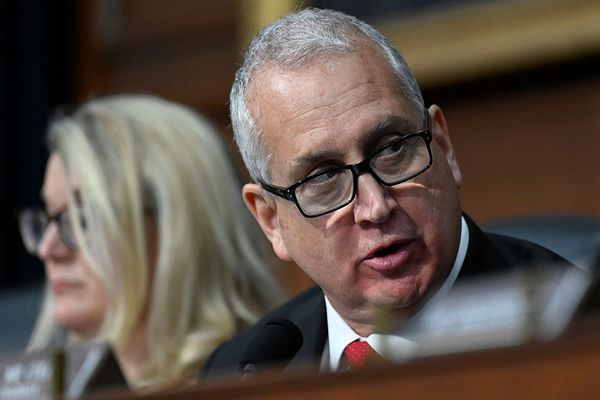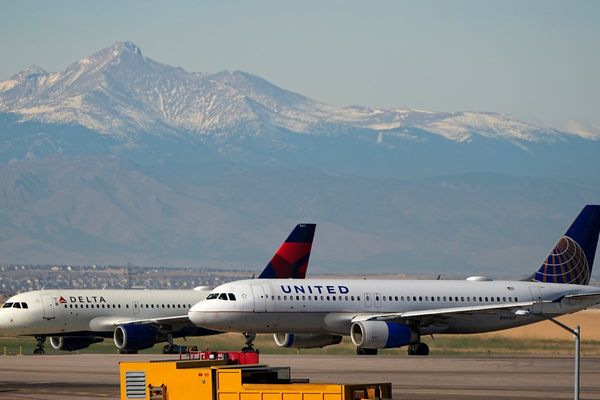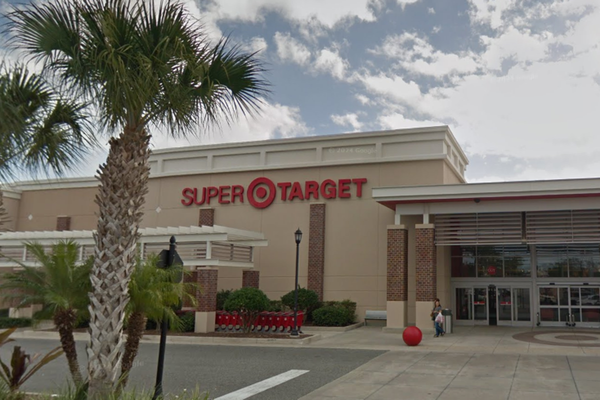A police scanner was crackling in the background as Alan Henney did laundry one April afternoon when the sound of yelling made him pause.
The 57-year-old has for decades monitored the radio channels used by first responders in and around the nation’s capital. About 15 years ago he began sharing what he hears on X, making a name for himself as an independent source of news on emergencies across Washington DC and its neighboring states.
At his suburban Maryland home, he listened intently as officers responded to the sort of crime that has happened with shocking regularity in Washington DC: the murder of a teenager, allegedly committed by another teenager.
Over a channel used by employees of the region’s Metro rail system, a panicked voice was shouting that a shooting had occurred on a station platform. Henney mentally noted the details of the commute-hour gunfire and then tweeted it out to his more than 65,000 followers . “CRITICAL METRO SHOOTING--- Brookland Metro. Male shot in head. Sounds as if it happened on the platform. Station was loaded with school kids. Station on bypass now. Shooter was a fare evader.”
Before the city’s police department made the shooting public, fellow scanner listener Larry Calhoun broke the news that the victim had died to the nearly 81,000 followers of his account @RealTimeNews10 on X.
“@DCPoliceDept and @MetroTransitPD on scene of a shooting with a teen male pronounced dead from gunshot wound injuries,” Calhoun tweeted.
Police would days later arrest a 16-year-old boy for the murder of a 14-year-old on the station platform – the third juvenile killed in the federal district at that point in the year, the Washington Post reported, and the latest reminder to its residents of how Washington DC has become a national outlier in homicides.
The overwhelmingly Democratic city is far from alone in struggling with violent crime, but ahead of the November presidential election, Republicans have singled out its plight to argue that progressives everywhere cannot be trusted to keep the public safe.
While violent crime spiked nationwide following the outbreak of Covid-19 in 2020, many cities have seen rapid drops in the years since. But not in DC. The 274 homicides on the capital’s streets in 2023 represented a spike of 35% from the year prior and the most since 1997, while robberies last year shot up by more than two-thirds and motor vehicle theft by 82%.
In response, the city council rolled back some criminal justice reforms enacted after the murder of George Floyd in 2020, and activists have moved forward with recall attempts against two local lawmakers.
Though the city’s data shows violent crime has dropped by about a quarter so far this year, the GOP’s presumptive presidential nominee, Donald Trump, has said the “horribly run” capital should be taken over by the federal government, while his conservative allies have proposed deploying the secret service to fight crime, if he is elected. Such threats carry particular weight, since Congress has the ability to change Washington DC’s laws.
Through it all, Henney, Calhoun and others in the capital’s small group of part-time crime trackers have seen their visibility swell, with their near real-time streams of social media posts documenting all forms of mayhem. Their follower counts now number in the tens of thousands, and include a fair share of the city’s reporters and political operatives. Earlier this year, one of their more outspoken members appeared on the conservative Fox News commentator Jesse Watters’ show to back up his claims that the city had become unsafe.
While many describe what they are doing as journalism, others in the city have accused them of insensitivity in their coverage, or exaggerations that make the region’s crime looks worse than it is. In a fraught election year, their local footprint could have widespread impact.
Denise Rucker Krepp, a former Washington DC neighborhood commissioner, said she had used the accounts’ reports to press federal prosecutors for more transparency on whether they are pursuing charges against suspects, and last year she appeared alongside top congressional Republicans at the signing ceremony for a resolution that blocked the capital from changing its criminal code, which Joe Biden signed.
“They’re providing a real-time account of what’s going on,” she said.
“Previous to their existence, we were waiting for days for newspaper reports. And that’s when we were lucky to get the newspaper reports, or maybe we were waiting hours for folks who were reporting on TV.”
Lindsey Appiah, Washington DC’s deputy mayor for public safety, said the accounts can play a positive role when they publish information that helps “our residents to be safe and work with us to make things safer”.
But she cautioned there had been instances when the accounts had distorted the severity of emergencies, or when family members learned from them – rather than the authorities – that their loved one had been killed or injured.
“Sometimes what our officers may find, or that fire [officials] may find, is that there isn’t really anything … there’s no crime or otherwise,” she said in an interview. “That doesn’t translate through. So what you’re creating is a heightened sense of fear in people and anxiety.”
Those who run the accounts see the voluntary hours that they put in differently.
A former television assignment editor, Henney began tweeting what he heard on his scanner after exiting a newsroom job to care for his ailing mother. Calhoun, meanwhile, said he got in touch with Henney not long before he was furloughed from his job in retail at the start of the Covid-19 pandemic, impressed by what he was learning from his posts on X. “Finding his account … it just blew my mind. I’m seeing somebody put out so much information I wasn’t seeing in the news,” Calhoun said.
He launched DC Realtime News in May 2020. Soon after, Calhoun became a victim of crime himself, struck in the arm by a bullet as he was driving home in Maryland, a bystander caught in a gun battle.
“When I got shot, it actually legitimized me,” recalled Calhoun, 41. “I wasn’t expecting that, I wasn’t looking for that. I wanted my work to speak for itself, but when I was shot, it allowed me to connect with the community, with victims.”
Since then, Calhoun’s follower count on X has exploded, fueled, he said, by public interest in crime, and the fact that there has been no shortage of it. “The incidents have been nonstop. If I had nothing to report, then I wouldn’t have a major following. But, unfortunately, this area continues to have high crime,” he said.
The accounts’ popularity has risen at the same time as the region’s newsrooms have struggled. Earlier this year, the local news outlet DCist was shut down by its owners, while a wave of buyouts at the Washington Post depleted the ranks of reporters assigned to cover the city.
Henney, Calhoun and the others who run public safety-focused social media accounts that sprang up during the pandemic use many of the same methods as reporters, including relying on radio traffic from first responders for tips about crimes, confirming details with spokespeople for the police and fire departments, and occasionally going to crime scenes to report.
Alexander Pyles, the associate dean of academic affairs at the University of Maryland’s Philip Merrill College of Journalism, said these accounts serve the “community’s need to find out what’s happening in their neighborhood” at a time of heightened concerns over public safety.
But the information they provide often ends up being far more limited than what a professional news outlet could produce, and without editorial oversight. “They’re not able to take the time to put things in context, to write a trend story, to dive into six months, a year, multiple years of data, and do the kind of work that a professional journalist in a newsroom might do,” Pyles said.
“We have a better sense of what’s happening day to day, but does that give us a true sense of what the community is like now compared to last year, a decade ago? I’m not sure that is helpful in that way.”
Henney views the group as “news reserves”, who can help the region’s newspapers and broadcasters determine which incidents are worth sending their overstretched staff out to cover.
“My goal is to try to get the information out there timely. You want to get your people going – if you’re in the news business, half an hour makes a lot of difference,” Henney said.
It does not always go smoothly. Since it started posting about crime in late 2020, one such account, Killmoenetworkent, has attracted a combined 163,000 followers on Instagram and X. Last year, the account reported that Ebola had possibly broken out at George Washington University hospital in Washington DC, drawing a denial from the institution and becoming the topic of several fact-checking articles. The account’s author declined to comment.
Sensationalism v the public’s right to know
While the accounts cover the sort of emergencies that are staple topics of local newspapers or broadcasters, the people behind them can also be more openly political than professional journalists, and wind up squarely in the local and national discourse over crime.
Henney views himself as a “crime columnist”, and he doesn’t shy away from weighing in on what he views as the causes of crime – even if it rankles his readers, and the city’s leadership.
Last year, Henney got into an argument on X with the Washington DC council member Zachary Parker, who had proposed legislation to allow the city’s government and residents to sue the firearm industry. “Just as autos don’t strike pedestrians, guns aren’t the source of the killing. The problem is that this city has a terrible time managing conflict among young men,” Henney wrote in response.
The council member shot back, saying to Henney: “You and others are quite active on this app promoting crime.” A spokesperson for Parker declined to comment.
When the shooting took place at Brookland Metro station, Henney said that a police source informed him that the suspect was a fare evader, and he included it in his post, considering it just “a factual piece of information”. But commenters on X wondered how that was relevant, with one accusing Henney, who is white, of “subtly racist undertones”. A 2018 study by a civil rights group found that those cited or summoned for not paying the fare to use the capital region’s public transportation were overwhelmingly Black.
“This is why we can’t have a discussion on anything in our society, because it all boils down to the conflict over race,” Henney said in an interview.
Much as they did with Calhoun, Henney’s tweets caught the eye of Elissa De Souza, who moved to Washington DC’s Navy Yard neighborhood from Virginia two years ago, and not long after had her breakfast disrupted when gunfire rang out nearby.
The south-eastern neighborhood of newly built offices and apartment blocks lately has been the scene of violence that made the national news, including the carjacking of a congressman in 2023, and a shooting near its baseball stadium two years prior that sent fans scrambling into the dugout. This past weekend, the Republican congressman Mike Collins tweeted that two of his staffers had been victims of a violent robbery attempt in the Navy Yard neighborhood – which he called evidence that “our nation’s capital has become a warzone because of pro-criminal policies peddled by D.C.’s government”.
Describing herself as an “anti-crime community advocate”, De Souza, who works in law enforcement, began tweeting about crime in her neighborhood at the start of this year. Though she has only a few thousand followers on X, she was invited on Watters’ show in February, where she complained how stores were keeping toiletries locked up to prevent shoplifting.
De Souza has since found herself the subject of particular opprobrium, including an entire thread on Reddit that labeled her “bad for this city” and a regular barrage of mocking response to her tweets.
De Souza relies on tips from neighbors or her own observations for her posts, but these can occasionally lead her astray. She recently advised readers to “avoid the area if possible and stay safe” when a police car was parked with its lights activated, only to later write that the officer was apparently responding to a stuck elevator. Her retweet of a Republican-controlled House committee’s photo of a seemingly open ballot drop box in the Navy Yard neighborhood drew a response from a city council member, who said the photo was taken as board of elections employees were working on it.
“A lot of people just do not agree with what I have to say,” De Souza said in an interview. But to her, “my posts are usually pretty neutral. It’s just telling exactly what is going on.”
Patrice Sulton, executive director of the DC Justice Lab, which advocates for reform of the city’s criminal justice system, acknowledged that the accounts satisfied the public’s desire to learn about what is happening in their neighborhood, but said their tendency to editorialize simultaneously undermined their ability to achieve that goal.
“You are reporting out what is second- or third-hand information about something that occurred, and you’re putting a spin on it about either the frequency, the severity or the importance of that individual event without larger context,” Sulton said.
“You’re being selective about whose pain to highlight in a given moment and I think making suggestions about what to assume about that and what to do about it as a response.”
* * *
The veteran former public safety journalist Dave Statter covered the capital during the bleak 1990s, when the annual number of homicides stayed above 400 for years, and Washington DC gained a reputation as the country’s murder capital.
But though violent crime rates are lower now than they were then, he does not think the city’s leaders have ever been under as much pressure to deal with crime as they are today – which he attributed to the rise of social media.
On X and Instagram, sincere residents and anonymous trolls alike can appeal to the city’s leaders to do more to keep its streets safe, all in full view of national politicians looking to seize on Washington DC’s troubles for their own gain.
“These people brought it down to the neighborhood level. People weren’t really clear what’s going on all the time. These guys have given them some clarity and, with that, I am sure it brings mounting pressure to the political leaders because of it,” he said.
“It’s a double-edged sword in some ways. I think it’s good that there’s accountability, but maybe without context, sometimes some things are getting blown out of proportion.”







